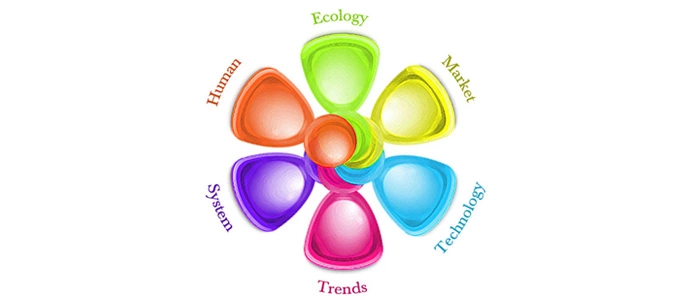My Definition of Design

Design by definition is an interdisciplinary field that has so many perspectives that it is usually hard to grasp. Many intelligent people tried to break down design to a few elements, but it is never universal, always subjective. Design is floating through time & space and is so forth not a constant, but always changing. At this time in this place I picked the following six elements, that are important to consider in a design-related activity.
Human
The focus of each design activity will be a human. This is because the human race is the only life form on earth that is able to design. Obviously, the target of each design activity (in a economic, social, cultural or artistic context) is to reach a specific amount of people.
Market
The concept of the market delivers the information what is already there, what is a niche, what is mainstream, where are opportunities, where are the risks and so on. Especially, at the first stage of a design activity it is useful to know what is the status quo.
Trends
Between the status quo (the market) and the future happening there is something that shows us what the future is all about. A trend signalizes the designer a path that is more likely than others.
Technology
Since the invention of the wheel technology was the enabler of social, economic and cultural changes in human societies.
System
If we change an artifact in our society then it is inevitable that other things change too. Designers have to think in systems and should be aware that their design decisions influence much more that was expected in the first run.
Ecology
It could also replaced with earth, nature or human living space. The overall mission for a design activity should be defined by the ecologic constraints and consequences.
Feedback
Back to top